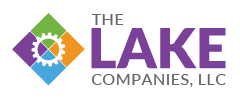Top Tools and Information for Manufacturing Managers

What tools enable a manufacturing manager to be successful? We sought to answer this question by surveying dozens of companies and compiling a list of what shop floor managers need to stay ahead in the production race.
Just for starters, supervisors reported missing vital, up-to-the-moment information about Employees, Jobs, Workloads, Scrap, Scheduling, Utilization, Efficiency, Delivery, Customer Orders, Customer Bookings, Daily Status, Fulfillment, Profit Margins, Materials, Equipment and so on. We won’t go into further details, but it appears that many floor supervisors feel they are flying blind to what need on their shop floors to work closely with and effectively manage their employees.
As we talked about in the last blog post, shop floor managers are confronted with an information drought. To put it simply: despite their best efforts to do their job properly, they are not comfortable with what is going on because they can see, but still lack clarity.
While that may be a misrepresentation, it is often true that managers don’t have the tools to know with absolute certainty what is going on in real time on their shop floor. They are being held back by untimely information, as well as lack of complete information. They don’t know who is supposed to be on what machine or even who is supposed to be doing what job. They couldn’t tell you what current inventory levels are with precise accuracy. They can’t tell you when a machine is scheduled for maintenance or whether an employee is on vacation or out sick. And quite frankly, that is too much information to keep in their head at any one time.
We surveyed dozens of our client companies to determine what information manufacturing floor managers were missing. We came back with a mineshaft full of gems that would help us understand their problems and drive us to find solutions to assist them.
So what kind of information does a supervisor need to succeed in doing their job at a top level?
- Quick, timely, accurate and clear data
- Delivery schedules
- Job costing
- On-time job performance by department
- Late reports
- Employee utilization
- Employee status, wc, dept, shift, current job, training, attendance, vacation
- Employee metrics on a dashboard
- Jobs shipping today
- Dollars shipped each day
- Graphic shipping displays
- Bottleneck charts
- Estimated workload
- Hours scheduled
- Amount of material scrapped
- Quality scores for each production line
- Scrap variances by work center, department, shift and employee
And this is only the tip of the iceberg.
But most importantly, any kind of a solution was a non-starter if it required the supervisor to have technical skills, or to hunt for, or create information, reports or dashboards.
The information managers are getting is not timely, not easy to get, not easy to understand, not visual, not mobile, and often requires supervisors to put on an “IT hat” and create their own data when most don’t have the technical skills or the time required to do so.
The question remaining then is how can we help supervisors solve these problems?
In our next blog, we will answer that question and show how asking the right questions can yield a beautiful solution.


Comments are closed.